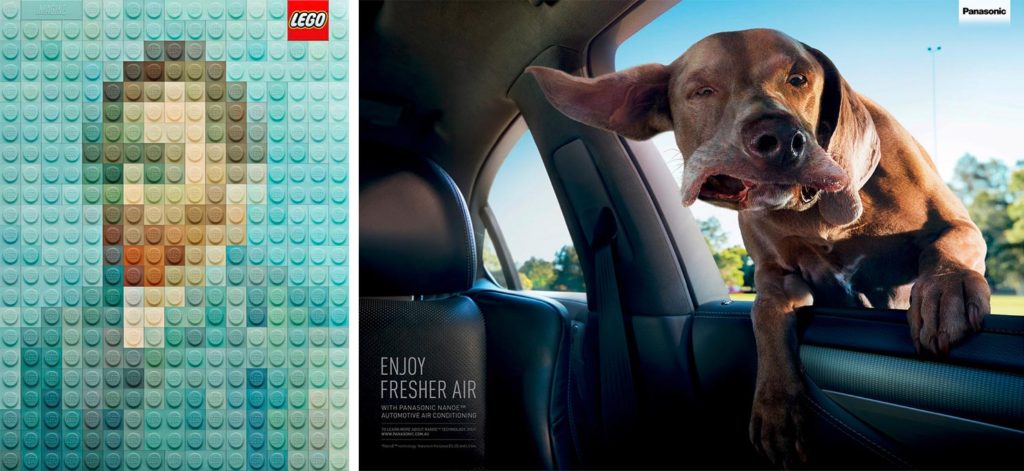
Where can one find creative freedom pushed to its limits? Artists and designers both create visual compositions – but their reasons for doing so are quite different.

Imagine a task is set before you. In order to carry it out you will receive a large white canvas. The task is clear to you and you choose your preferred tools. With the solution in mind, you begin to draw. The formation is flowing, nothing interrupts you and your creative process. You start at the top left and finally finish the work on the bottom right. Sound familiar? Probably not, because not everything is a simple question of lines and the way shapes and colors are chosen and arranged. The creative process, the way of working as an artist or a graphic designer, is a truly non-linear process. To watch an artist at work, one may wonder at any point, what is he or she doing? Is that thing really useful? The creative process, the creative element in art, is intangible.
Agencies like to boast about their creative skills, their designs. These are things that are easily visible to outsiders. An advertisement in a magazine, a catalog or a new logo for a company. Opinions on the work are highly subjective. One can also delve into the discussion …is it art, or not? This throws up additional questions: what is the difference between art and design? Or can these ever unify and make the designer at the same time an artist? Difficult questions – what is your opinion?
Essentially the word “art” refers to the result of targeted human activity which is not clearly defined by a function. It is a manufactured product of culture, which originated from a creative process.

Artistic freedom is even protected in Germany by Basic Law. In the modern era, not only the finished object, but the creative process itself can be considered art. The artist draws upon creativity – their mind is the only limit to the end result – they turn their insides out in order to express their ideas and thoughts. The artist chooses freely for surface colors and patterns. A brushstroke here, sometimes a dash of color there. Through practice, perception, imagination and intuition they will find a work of art. The message conveyed by that work, no matter whether it is a picture, a statue, or a film, may manifest differently to any objective observer. The artist describes their intentions and reveals what thoughts they harbored. The importance lies in what the artist wants to convey. If a large number of people like the work, it increases in monetary value – but the value of the content is independent of public recognition.
But what is design? The term originally comes from the Latin ‘to mark out’. In contrast to art, design goes beyond the outward shaping of a piece of work. Designers have to deal with the function of an object and its interaction with the user. In other words, a designer must take into account function, operability and durability as additional criteria in the process, compared to the purely creative formation of art.
These three above-mentioned attributes can be very diverse. An art director – as a senior member of a creative team – must also balance the brief with the artistic accomplishment of their product. It is about more than art, it comes down to the fulfillment of a goal.
Unlike in art, the mind is not the only limitation here. For where the artist can choose the object of their work freely, the designer is limited. The aim is to convey a message. This may be a new product or a new service. However, the message may also need to contain certain values, enticements, or even the announcement of a forthcoming event.
No matter what it is. The viewer must understand and internalize the message quickly and directly. Why so fast? In today’s fast paced world, the attention of the viewer is limited only to a few moments, putting two attributes – the operability and durability – firmly on the agenda.
An ad agency must ensure that the specifications, functionality and creative realization are in harmony in any task. Ultimately, in addition to product quality and customer service, any commercial performance needs to have impact. To give potential customers the right image is an important secret to success, especially in the internet age. However, if the results of the creative process are insufficiently attention-grabbing, not immediately understandable, and not appealing enough to consolidate this in the viewer’s memory, the effect fizzles and it remains something that is neither design nor art.